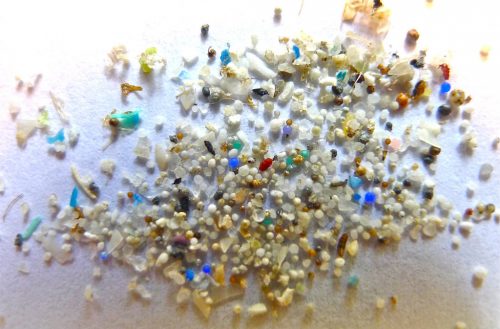In an increasingly health-conscious society, many consumers demand their food be transparent, from its ingredients to its production, through regulations, labels, and bans. Labels, however, may in fact be part of the problem itself. A recently published scientific investigation from Rice University’s Danning Zhang offers results that call food and beverage packaging, rather than the composition of food and drinks themselves, into question.
Bisphenol A, often referred to as BPA, was developed more than a century ago by Russian chemist Aleksandr Dianin, but it did not start playing a role in the marketplace until the plastic revolution in the 1950s. Chemists mixed BPA, a stiffener, and a chemical compound called phosgene COC12 to form polycarbonates—plastic. In the 1960s, the Food and Drug Administration (FDA) approved the use of plastics in the context of food packaging, and plastics have dominated modern industrial and commercial practices ever since. BPA-containing plastics take forms including water bottles, baby bottles, CDs, medical devices, receipt paper, dental sealants, and coatings on canned foods. They also often show up in plastic food packaging.
As plastics are so ingrained in today’s societies, the main concern with BPA lies in how everyday life exposes humans to it. Scientists have widely found levels of BPA in many tests of surface water and tap water. Higher temperatures and longer periods of time can cause the chemical to leach from the packaging into the food or beverage inside. Heating up food from a plastic takeout container in the microwave, for instance, poses the risk of chemicals from the plastic leaching into the food. While the FDA banned BPA from baby bottles and infant formula packaging in 2012 and 2013, BPA has not been banned across the board. Human exposure to BPA has been shown to damage reproductive systems, cause diabetes, impair immune function, heighten blood pressure, and affect neural and behavioral development.
Zhang, an Environmental Engineering PhD candidate at Rice University, led a study on the remediation side of BPA-contaminated water. His report explored more efficient ways for dealing with contaminated water. Zhang received funding and support from the Center for Nanotechnology-Enabled Water Treatment (NEWT). Headquartered at Rice University, NEWT also has connections to Yale University, Arizona State University, and the University of Texas at El Paso. According to its mission statement, NEWT is the first of its kind to “apply nanotechnology to develop transformative and off-grid water treatment systems that both protect human lives and support sustainable economic development.”
In the study, Zhang worked with the photocatalyst titanium dioxide, sugar-based cyclodextrins, ultraviolet light, and BPA. Photocatalysts like titanium dioxide use ultraviolet light to speed up chemical transformations. According to his research, Zhang chose titanium dioxide for its cheaper price, relative strength, photoactivity, and safe characteristics. Ultraviolet light kicks up the capacity of titanium dioxide to release reactive oxygen species—chemicals containing oxygen—that can destroy particles like BPA. According to Zhang, that’s about as far as past scientific investigations have explored. Knowing that a majority of the reactive oxygen species would be lost to other particles in water rather than the targeted contaminant molecule, Zhang chose to attach a cyclodextrin molecule to the surface of the titanium dioxide photocatalyst. This ensured breakdown of the contaminant, as cyclodextrin’s hydrophobic, or water-resisting, areas trapped the similarly hydrophobic contaminant BPA. The entrapment allowed the titanium dioxide’s released reactive oxygen species to spend time breaking down and neutralizing the harmful components of the contaminant.
Even further, the speed at which the chemical reactions broke down the BPA surpassed what unenhanced titanium dioxide would normally be capable of. By using a larger size titanium dioxide particle, Zhang reduced the amount of energy used by the micro-filtration system and conserved its ability to reuse the titanium dioxide particles in future photo-catalytic treatment. With a virtually built-in recharge system, Zhang’s research on the ability of enhanced titanium dioxide and cyclodextrin molecules to collaborate in trapping and destroying BPA suggests a new, efficient, and more cost-effective approach to water treatment. Though much more needs to be investigated, such as how to strengthen the surface coating’s stability so that it can last longer, Zhang calls these results promising. “The catalyst we developed enables low-cost recovery as well as highly efficient removal of several contaminants. We do believe it can be implemented for real water treatment after that,” said Zhang.
With more chemicals and potential contaminants being released each day into the market and the environment, the need for significant innovations surrounding creative methods of water purification grows increasingly pressing. As the cost of successful water treatment decreases with up-and-coming water remediation technologies like Zhang’s, the treatment process can also be more easily expanded to communities struggling with limited water due to previously uncontrolled contamination. Zhang’s work with NEWT suggests that nano-sized materials may provide the solutions to big issues, like chemical contamination of water, in the coming years.

